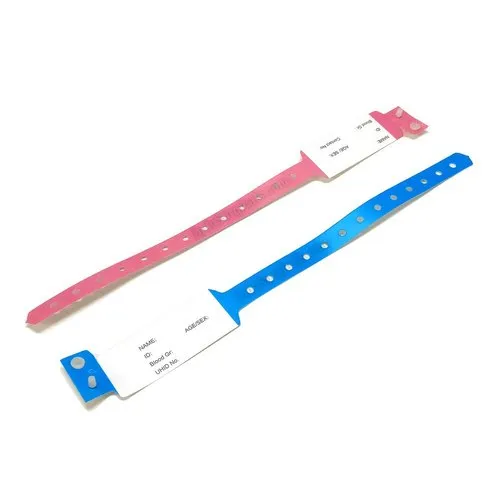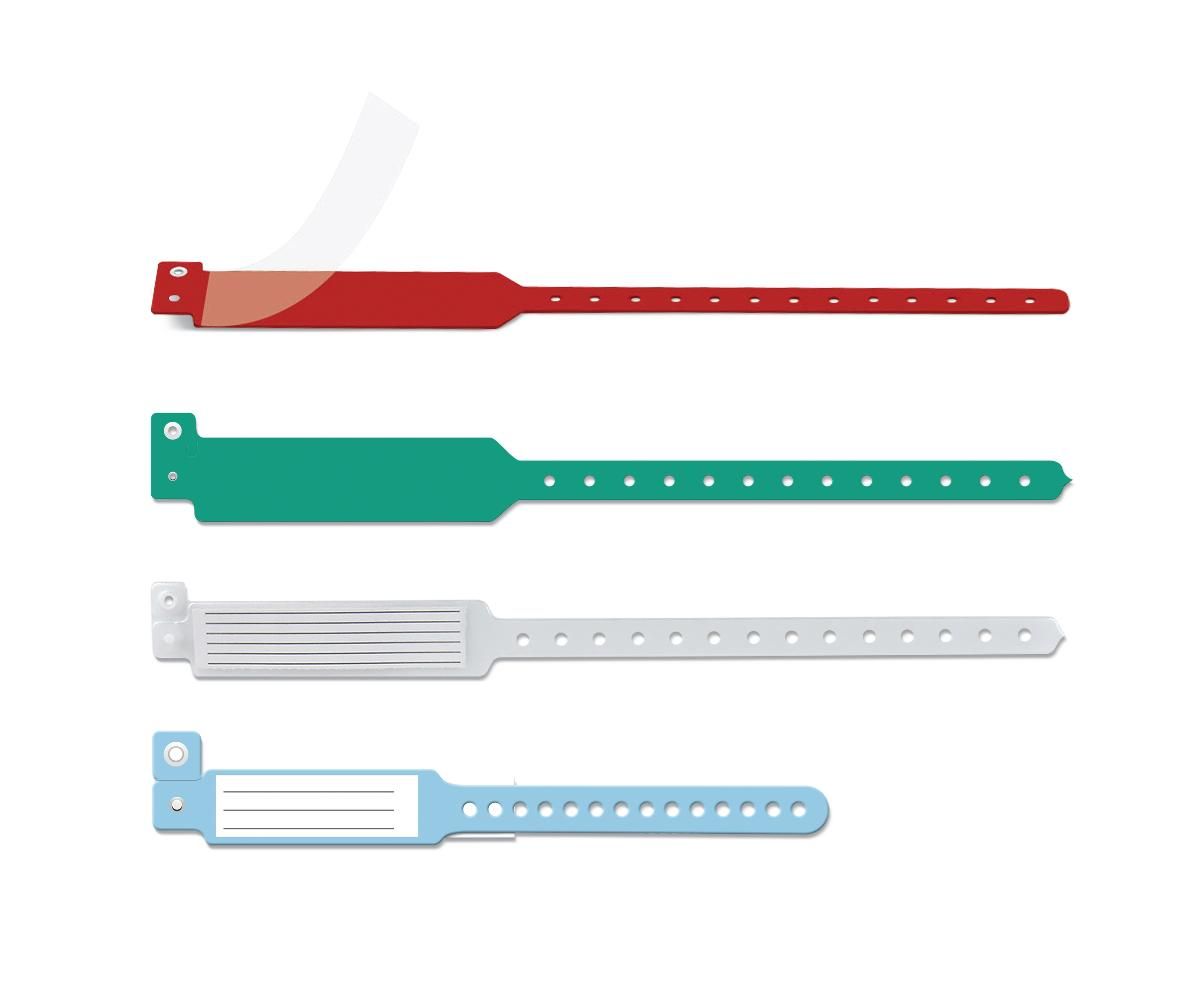How Patient Identification Band Improves the Overall Patient Experience in Healthcare Facilities
How Patient Identification Band Improves the Overall Patient Experience in Healthcare Facilities
Blog Article
Enhancing Person Care With Reliable Recognition Bands
The execution of effective recognition bands is a pivotal element in boosting client treatment within health care settings. These bands not only offer to mitigate the risks associated with client misidentification but additionally enhance interaction among medical personnel, therefore promoting a more secure environment. Numerous types of recognition bands satisfy particular requirements, from durable wristbands for adults to specialized bands for babies and crucial situations. As the landscape of patient identification advances, one must consider the implications of these systems on general medical care distribution and individual end results. What developments wait for in this vital area?
Significance of Person Identification
Making sure exact individual identification is important in medical care setups, as it straight impacts the security and high quality of care provided. Misidentification can cause significant mistakes, including providing the incorrect medication, executing wrong treatments, or miscommunicating essential person info. Such errors not just jeopardize patient safety yet can likewise lead to lawful implications and decreased count on medical care systems.
Efficient individual identification is basic to establishing a secure setting where patients receive individualized and appropriate care. It promotes the exact paperwork of clinical histories, allergic reactions, and treatment strategies, ensuring that medical care providers have accessibility to vital information in all times. Additionally, durable recognition protocols aid improve interaction amongst medical personnel, enhancing partnership and lowering the danger of mistakes.

Types of Identification Bands
Recognition bands play a vital role in preserving precise patient records and boosting safety within healthcare settings. Different kinds of recognition bands are utilized to satisfy the specific requirements and demands of different person populations.

Another kind is the ankle joint band, which is especially valuable for babies and babies, ensuring that recognition continues to be undamaged even throughout treatment procedures. Specialized bands, such as those for allergic reaction signals or fall threat indications, supply additional layers of safety and security by drawing instant focus to vital patient conditions.
Recently, digital recognition bands have acquired popularity, integrating barcodes or RFID modern technology that can be scanned to quickly retrieve person data. These bands streamline workflows and lessen the danger of human error during client identification processes.
Benefits of Efficient Recognition
Reliable recognition of people with the use of recognition bands contributes considerably to general client safety and care high quality. By making certain that each person is accurately determined, doctor can efficiently match clinical therapies and procedures to the appropriate individual, lessening the threat of mistakes. This is especially important in atmospheres with high patient turnover, where the potential for misidentification is better.
In addition, effective identification bands enhance communication amongst health care groups. Clear and exact individual identification fosters collaboration and ensures that all staff member recognize a person's particular needs and clinical background. This communication is necessary for providing coordinated treatment, particularly in emergency situations where time is critical.

Eventually, reliable recognition with making use of identification bands not just safeguards clients yet likewise promotes a culture of safety and security within medical care centers (Patient Identification Band). By prioritizing accurate recognition, healthcare companies can boost results and enhance the total individual experience
Implementing Recognition Solutions
While the significance of patient recognition is well recognized, the execution of durable identification systems postures a facility difficulty for healthcare companies. Establishing reliable recognition systems needs an extensive approach, incorporating modern technology, employees training, and process assimilation.
First, organizations must pick suitable recognition innovations, such as barcode scanning, RFID, or biometric systems. Patient Identification Band. These technologies must be examined based on expense, usability, and compatibility with existing facilities. A pilot program can aid recognize prospective concerns before full-blown execution
Following, comprehensive training for personnel is important. All workers must comprehend the significance of precise person identification and be proficient in using the picked innovations. Routine training updates and assessments can strengthen ideal techniques and guarantee ongoing conformity.
Additionally, medical care organizations must create standardized procedures for patient recognition throughout all divisions, improving and decreasing disparities communication. Regular audits can help recognize gaps in adherence to these protocols.

Eventually, an effective application of identification systems not just improves individual safety however also fosters a society of liability and diligence within health care settings, guaranteeing reliable and consistent patient treatment.
Future Trends in Person Identification
Developments in innovation are set to change person identification practices in healthcare setups. The combination of biometric identification approaches, such as fingerprinting and facial acknowledgment, is anticipated to enhance precision and safety. These innovations can dramatically minimize the risk of misidentification, ensuring that patients get the correct therapies and medications.
Furthermore, the execution of blockchain modern technology for patient investigate this site records is gaining grip. This decentralized strategy can provide a secure and tamper-proof method for managing client identifications, thereby enhancing access to essential details across different doctor.
Another pattern is the enhancing use of mobile wellness applications that leverage QR codes for patient recognition. These applications allow for real-time updates and easy accessibility to individual data, empowering health care specialists to make educated choices quickly.
Additionally, fabricated intelligence (AI) is positioned to play a vital function in analyzing person identification information, recognizing patterns, and predicting potential identification mistakes before they occur.
As these technologies develop, they promise not only to improve patient safety and security but likewise to enhance the general performance of healthcare shipment systems. Accepting these advancements will be important for future-proofing person care methods.
Conclusion
To conclude, efficient identification bands are necessary for improving client safety and security and care quality check out here within healthcare settings. By minimizing the dangers connected with misidentification, these bands help with timely and precise information retrieval, ultimately enhancing interaction among health care providers. The application of robust recognition systems not only promotes a society of safety and security but additionally settings healthcare organizations to adjust to future fads in patient identification innovation, ensuring ideal outcomes for people in diverse medical environments.
As the landscape of individual recognition develops, one need to take into consideration the implications of these systems on total healthcare distribution and person end results.Efficient patient recognition is essential to establishing a safe setting where individuals get ideal and tailored care. Ultimately, prioritizing effective person identification strategies not only fosters a society of safety yet also contributes to enhanced patient results and total fulfillment with healthcare services.
Effective recognition of individuals via the use of recognition bands contributes significantly to general patient safety and security and care quality. The application of durable identification systems not only cultivates a culture of security yet additionally positions health care institutions to adapt to future patterns in person recognition innovation, making sure optimum results for patients in diverse scientific environments.
Report this page